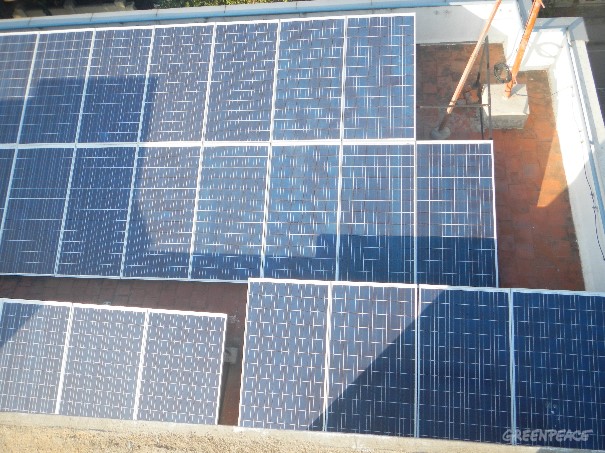Sustaining with solar
Environmental conservation and protection are the foundation stones of environmentalists and environmental organizations. Preaching and practicing measures that will uphold these beliefs are a day-to-day affair. Greenpeace, an environmental NGO, is no stranger to this. All our global offices, including the Indian office makes sure that our efficiency and energy savings are best in the industry.
We have been established in India since 2002 and since that time, we have been quite stringent about our e-waste and recycling policy and this has been welcomed genuinely by our peers and supporters. Taking our commitment to the next level, we came up with an initiative to make our office space (a four-storey building) a complete Green building. We retro-fitted all our lights with highly efficient LED’s and other appliances like fans, air-conditioners, etc. with five-star rated, low energy consumption products.
Along with this and a complete energy audit of the building, we decided to install a 18 kW solar PV system on our roof, which will be generating close to 80% of our daily energy needs. This project was a very important initiative and we had to make sure it was not only successful, but also effective economically. Considering a payback period of close to 7 years, this project was given a go ahead 3 years back, and for the last 2 years we have been successfully harnessing the power of the sun, effectively being used by close to 150 people in the office.
The system we have adopted is more of a two-way grid tied system which is directly connected to the grid. So in the morning hours we directly use the energy from the panels and once the energy drops post 5 p.m. the grid supply kicks in.
This also happens on cloudy and rainy days when we completely run on the grid. This system has also made us more intuitively responsible in consuming electricity in a smart manner and helped us reduce wastage. We also advocate and urge all our staff members and supporters to go solar in their homes as the state gives a lot of subsidy. The technicalities of installation are much similar and smaller in scale when one decides to put up a 1-3 kW rooftop system at their home. At present many states in the country have enabling policies that support rooftop solar programs, the most recent one being Delhi, which was achieved after a year-long public and political campaign by Greenpeace India.
With favorable policies in many states and presence of abundant sunshine, it’s never too late to go solar. “
“Going solar in our cities will reduce the overall power demand close to 40% both from the residential and industrial sectors. Similarly, solar can address effectively the energy access issues present largely in rural India.”
One such effective example, is the solar microgird set up in Dharnai by Greenpeace which powers the aspirations of people and provides them with 24/7 electricity which they never had in the last 35 years. It’s imperative that such models are adopted on a large scale to provide people with access to energy, then and there, in a timely and efficient manner.
Urban solutions and rural solutions are parallel pathways that need to coexist in today’s development pathway with increasing demand for energy. At the end of the day, it’s not about how much we consume, but how much we effectively save. After all, energy is also a natural resource.
Anand Prabu Pathanjali is a Climate & Energy Campaigner with Greenpeace India

